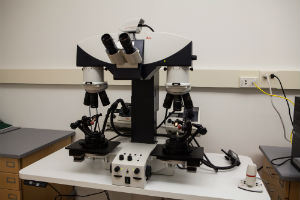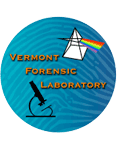When two items come into contact with each other, the surface softer object will be marked by the surface harder object (tool).
When a firearm is fired, several different areas of the firearm come into contact with the surface of a cartridge under extreme pressures. This pressure causes markings from different areas of the firearm to be transferred to the cartridge. The rifling is the spiral pattern of lands and grooves (indentations in the barrel) that impart spin on a bullet to stabilize the flight of the bullet through the air; the rifling leaves marks on the bullet as it passes through the barrel. The breech face is the area of the firearm that supports the head of the cartridge case during the firing process. The breech face leaves markings on the head of the cartridge case, as expanding gases push the cartridge case back against the breech face. Fired ammunition components can be classified to a group of firearms or a specific manufacturer based on the caliber, number of grooves, the width of the grooves, type of firing pin, the direction of the twist of the rifling, and other characteristics that are present based on the design of the firearm.
In firearm identification, fired ammunition components including bullets, cartridge cases and shotshell cases are examined for identifiable markings that can be compared to known standards produced by a particular firearm. Fired ammunition components can be identified as having been fired from a specific firearm if the markings that are present on the evidence are reproduced on known standards made by a particular firearm. Evidence items are simultaneously compared with known standards using a comparison microscope; a comparison microscope is a device which consists of two microscopes connected by an optical bridge that allows the examiner to observe both stages at the same time.
Toolmark Identification is similar to firearms identification, however instead of looking at marks transferred from a firearm the examiner is looking at any number of different tools. Screwdrivers, bolt cutters, pliers, and crow bars are all examples of tools that may leave marks in items of evidence that may be examined. Examples include; prying open a safe with a crowbar or cutting a lock off with a pair of bolt cutters.


